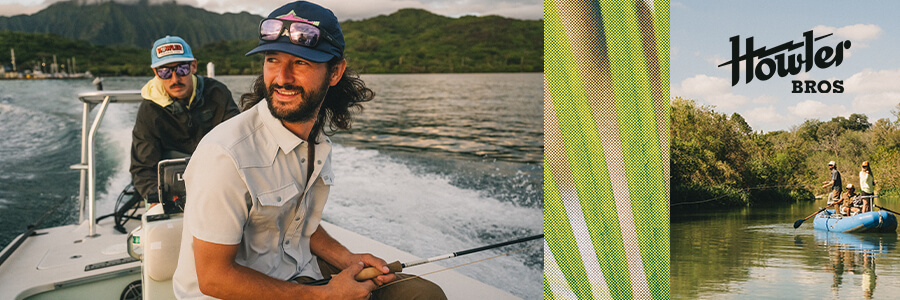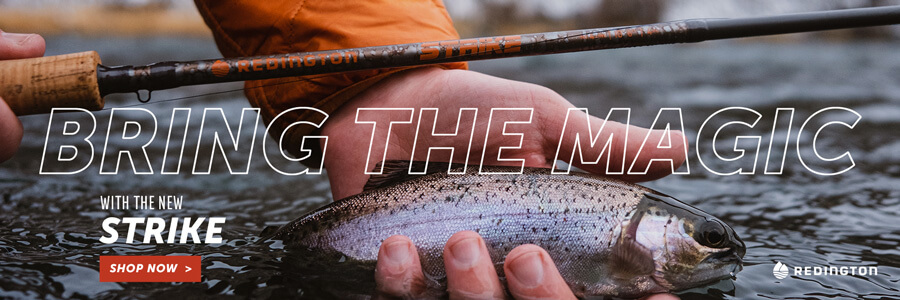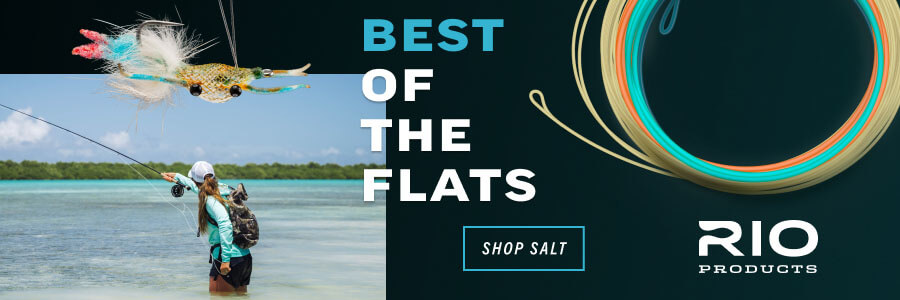Fishing a Proper Popper-Dropper - Summer 2014
I’ve got a running joke with a few of my fishing partners where we disparage the other’s choice in fly or fly combination by stating that it is “the stupidest thing I’ve ever seen. It will never work.” This statement alone, of course, guarantees that the fly will not only work, but
will work immediately and that it will invariably produce the biggest catch of the day. The genesis of this joke came some years back when my friend Peter from North Carolina came over to fish some of East Tennessee’s small mouth rivers. Peter, who was fishing from a kayak, proceeded to tie on a popper with a Tequeely fly dropped about 18 inches beneath it. One of my buddies in the boat with me immediately christened the Tequeely the stupidest fly he’d ever seen and naturally Peter began to put on a clinic on how to fish a popper-dropper rig.The advantage of the popper-dropper rig, at least in Peter’s case, was that he could more or less leave it unattended while he positioned his kayak as we drifted the river. On this day in particular, the fish were set up in the riffles and the runs and were completely content
to take the Tequeely (which vaguely mimics a hellgrammite) on the dead drift. Repeatedly we watched as Peter’s popper disappeared and he raised his rod with yet another fish on, more often than not within spitting distance from our drift boat and much to the chagrin of my buddy. While most if not all trout fisherman are aware of the dry-dropper or hopper-dropper rig and utilize it routinely, for whatever reason, this same concept has eluded many warm water fishermen to the detriment of their catch rate. The advantages of fishing a surface pattern with a subsurface dropper should be obvious; a disturbance at the surface draws attention to movement below.
I most frequently utilize the popper-dropper rig around East Tennessee while fishing for small mouth bass. The rig lends itself to the quirky nature of smallmouth, who at times can act like a picky trout and at others like their stillwater cousin the largemouth. In the spring, when fish are stacked in the riffles eating bugs as they emerge, the popper-dropper rig can be extremely effective drifted much like you would fish a nymph rig for trout. Later in the summer, once the dog days have set in, a popper-dropper rig can be extremely effective during the middle part of the day fished tight against the banks under the shade of the trees.At least for bass the rig can be a little unyielding, so a large line weight is typically preferred. I usually fish my popper-dropper rigs on either a seven- or eight-weight rod with a floating line that possesses powerful front taper (Rio’s Small Mouth Line or SA’s Titan Taper come to mind). Leaders don’t need to be long, but they should be sufficiently stiff to turn over the heavy combination of a large popper and a weighted dropper. I usually run a 7.5 foot 1X leader to my popper with about 18-24 inches of 3X to my dropper. Large, buoyant hard poppers seem to work best at the top fly in large part because it’s important that your dropper be weighted to get down quickly.For the most part my droppers consist of a variant of a rubber-legged wooly bugger (like the Tequeely), but that doesn’t mean you shouldn’t try more literal baitfish imitations like a clouser or gummy minnow. Finally, don’t limit your use of the combo simply to bass and panfish. Musky, pike, crappie, white bass, hybrids, saltwater, or warm water, a popper-dropper rig may just prove to be the pop your day needs.




